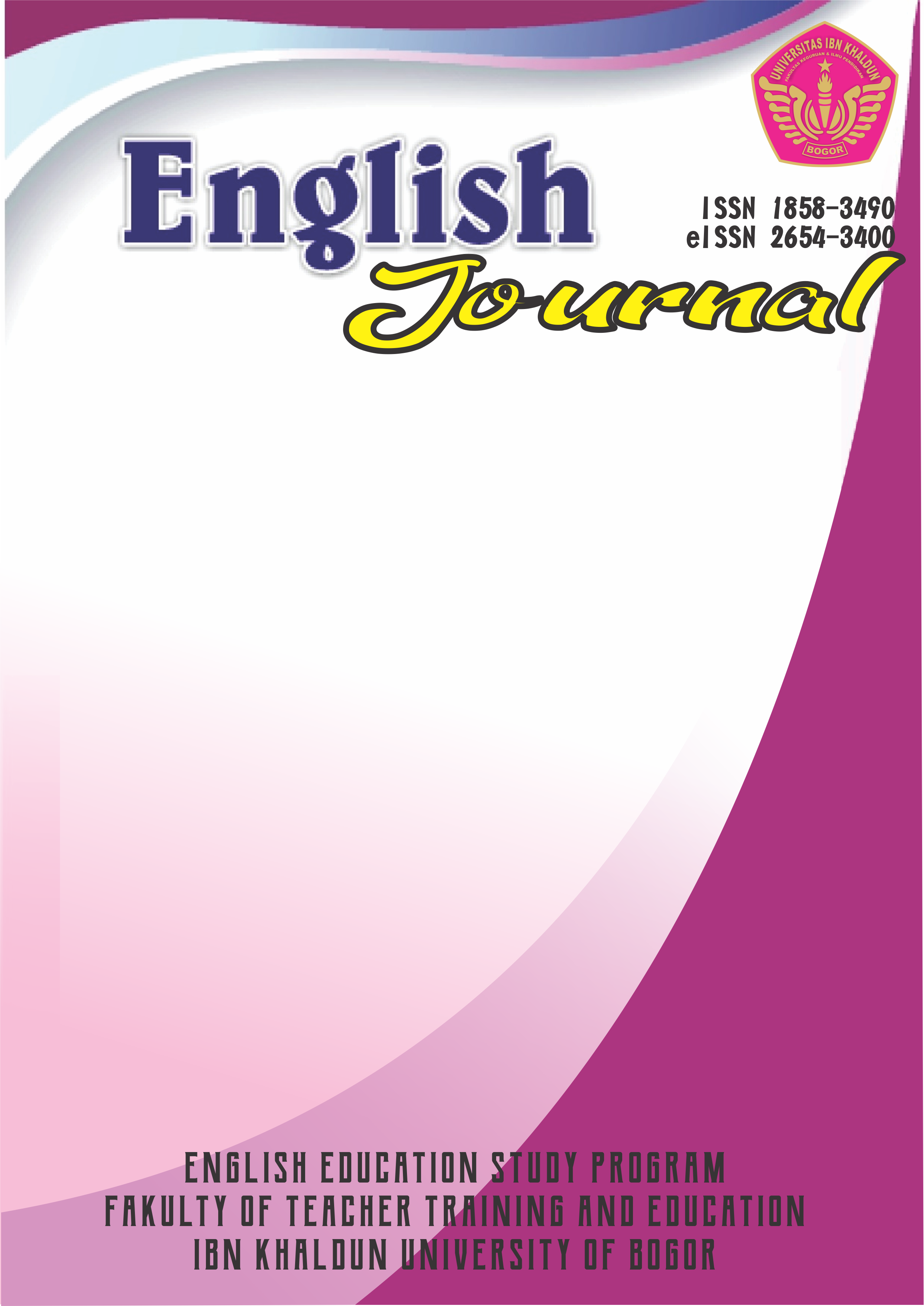DEALING WITH STUDENTS' RETICENCE IN SPEAKING ACTIVITY IN EFL CLASSROOM
DOI:
https://doi.org/10.32832/english.v13i1.3774Abstract
Speaking is an activity in an English classroom in which students must integrate not only higher order thinking skills but also confidence. As a result, it can be problematic for students because they feel shy or reticent. This study aimed at finding out the cause of students' reluctance in speaking activities. The study was framed by using classroom action research in which 2 cycles were employed. Each cycle consisted of four stages: planning, action, evaluation, and reflection. There were 40 students in the 7th grade of junior high school in Bogor as the participants of the study. The data was collected through documentation, observation, and semi-structured interviews. The results showed that the causes of students' reluctance in speaking class were shy, lazy, afraid and ignorance. Giving more students' talk time as a teaching strategy in English speaking activity can be done to reduce students' reticence.References
Creswell, J. W. (2011). Educational Research : Planning, Conducting And Evaluating Quantitative And Qualitative Research (4th Ed.). New Delhi: Prantice Hallinternational, India.
Danelle, Imbertson. (2017). The Importance of Student Talk and Strategies for Promoting Classroom Conversations. Daimbertson: St. Catherine University.
Gillies, R.M. (2014). Developments In Classroom Based Talk. International Journal Of Educational Research, 63, 63 - 68.
Jack C. Richards (2008). Teaching Listening And Speaking From Theory To Practice. Cambridge: CUP.
Keaten, J. A., Kelly, L., & Finch, C. (2000). Effectiveness Of Penn State Program In Changing Beliefs Associated With Reticence. Communication Education 49 (2), 134-145.
Liu, M., &Jackson, J. (2009). Reticence In Chinese EFL Students At Varied Proficiency Levels. TESL Canada Journal, 26(2), 65-81.
Luoma, S. (2004). Assessing Speaking. Cambridge: Cambridge University Press.
Mcelhone, D. (2013). Pressing For Elaboration In Students' Talk About Texts. Journal Of Classroom Interaction, 48(1), 4 - 15.
Novitasari, Dewi. (2016). Naturalistic Study On Communication Strategy Used By The Second Semester Students In Speaking Class Of English Education. Surakarta: Department Of Muhammadiyah University Of Surakarta.
Steven J. Carter & Lynn E. Henrichsen. (2015). Addressing Reticence: The Challenge Of Engaging Reluctant Adult ESL Students. Journal Of Adult Education 44 (2), 15-20.
Tsui, A. 1996. ‘Reticence And Anxiety In Second Language Learning' In K. M. Bailey And D. Nunan (Eds.). Voices From The Language Classroom.
Turner, J. (2010). The Impact Of Pupil-Set Targets On Achievement In Speaking: An Action Research Projectinvolving A Mixed-Sex Year 9 German Class. Journal Of Trainee Teacher Educational Research, 1, 1-34.
Van Den Branden, K., Bygate, M., &Norris, J. M. (Eds.) (2009). Task-Based Language Teaching: A Reader. Amsterdam: John Benjamin Publishing.
Wachidah, S. (2013). 2013 English Curriculum. Paper Presented At Seminar And Workshop On The 2013 English Curriculum, Bogor Ibn Khaldun University.
Wilhelm, J. D. (2014, September). Classroom Conversation: Inquiry, Dialogism, And Deep Understanding. Voices From The Middle, 22(1), 74 - 76.
Zhang, Xiuqin & Head,Katie. (2010). Dealing with Learner Reticence in the Speaking Class. ELT Journal 64(1), 1-9.

















1.png)




